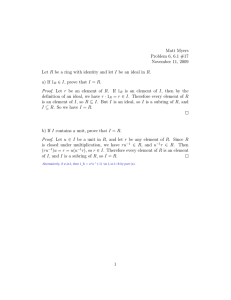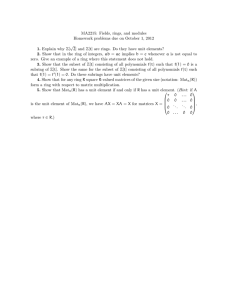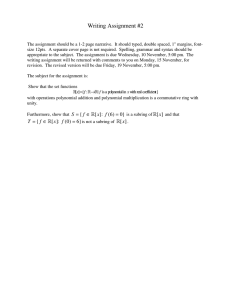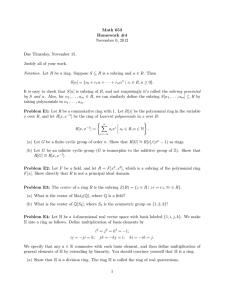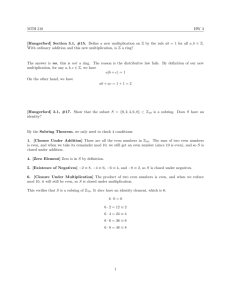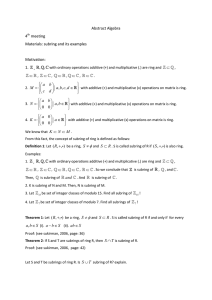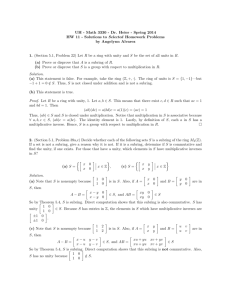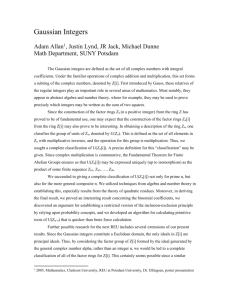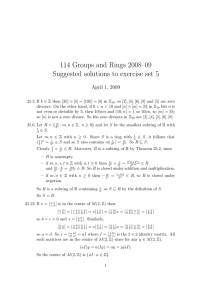MA2215: Fields, rings, and modules
advertisement
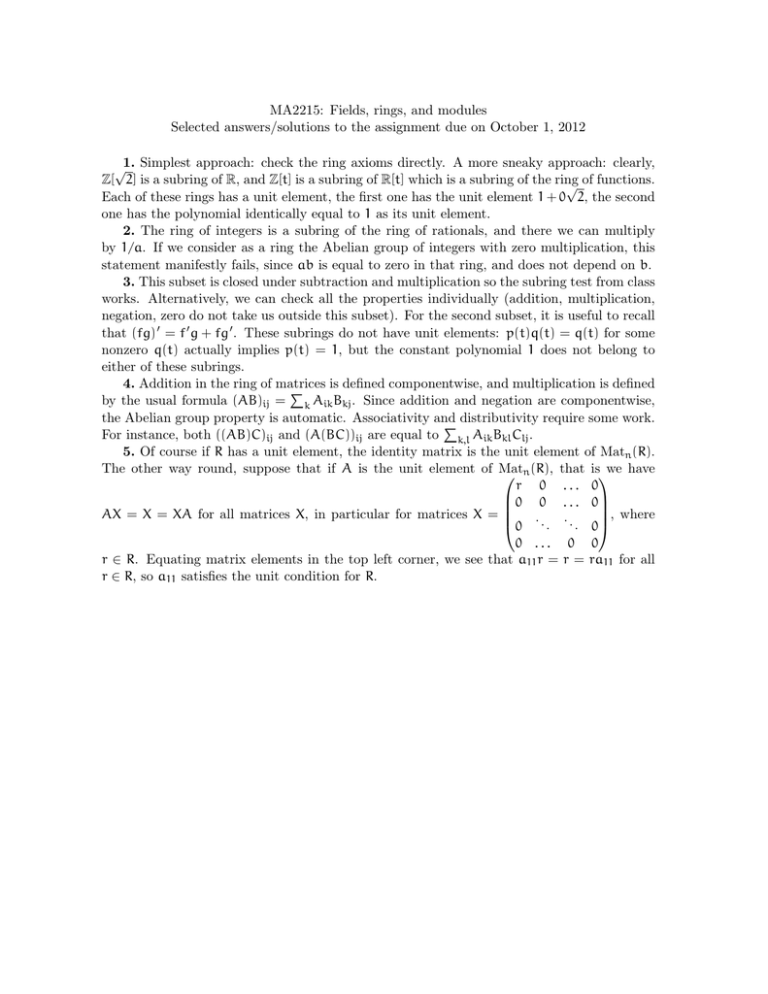
MA2215: Fields, rings, and modules Selected answers/solutions to the assignment due on October 1, 2012 √1. Simplest approach: check the ring axioms directly. A more sneaky approach: clearly, Z[ 2] is a subring of R, and Z[t] is a subring of R[t] which is a subring of the ring √ of functions. Each of these rings has a unit element, the first one has the unit element 1 + 0 2, the second one has the polynomial identically equal to 1 as its unit element. 2. The ring of integers is a subring of the ring of rationals, and there we can multiply by 1/a. If we consider as a ring the Abelian group of integers with zero multiplication, this statement manifestly fails, since ab is equal to zero in that ring, and does not depend on b. 3. This subset is closed under subtraction and multiplication so the subring test from class works. Alternatively, we can check all the properties individually (addition, multiplication, negation, zero do not take us outside this subset). For the second subset, it is useful to recall that (fg) 0 = f 0 g + fg 0 . These subrings do not have unit elements: p(t)q(t) = q(t) for some nonzero q(t) actually implies p(t) = 1, but the constant polynomial 1 does not belong to either of these subrings. 4. Addition in the ring of matrices is defined componentwise, and multiplication is defined P by the usual formula (AB)ij = k Aik Bkj . Since addition and negation are componentwise, the Abelian group property is automatic. Associativity and P distributivity require some work. For instance, both ((AB)C)ij and (A(BC))ij are equal to k,l Aik Bkl Clj . 5. Of course if R has a unit element, the identity matrix is the unit element of Matn (R). The other way round, suppose that if A is the unit element of Mat n (R), that iswe have r 0 ... 0 0 0 . . . 0 AX = X = XA for all matrices X, in particular for matrices X = . , where . . . 0 . . 0 0 ... 0 0 r ∈ R. Equating matrix elements in the top left corner, we see that a11 r = r = ra11 for all r ∈ R, so a11 satisfies the unit condition for R.

